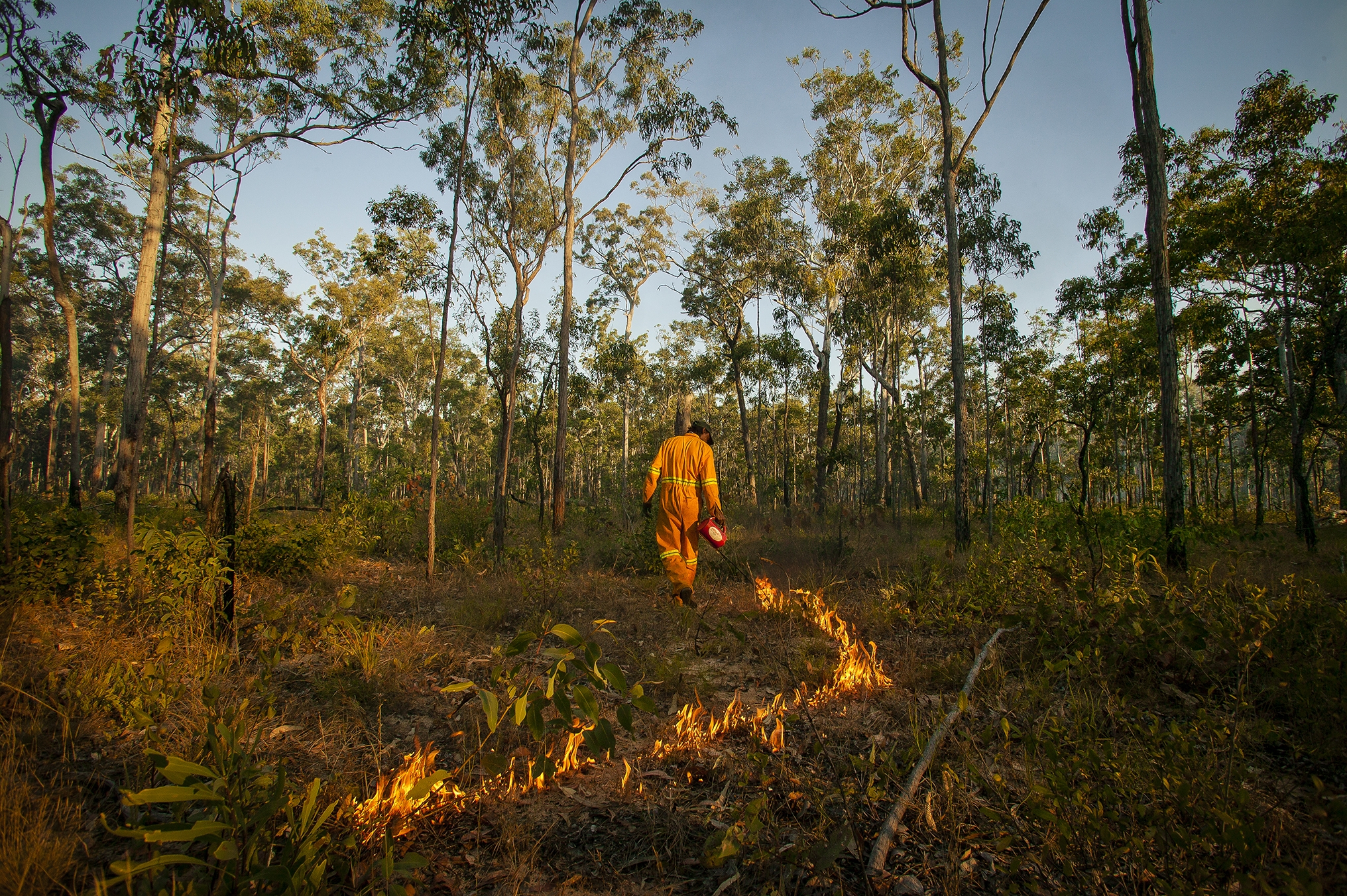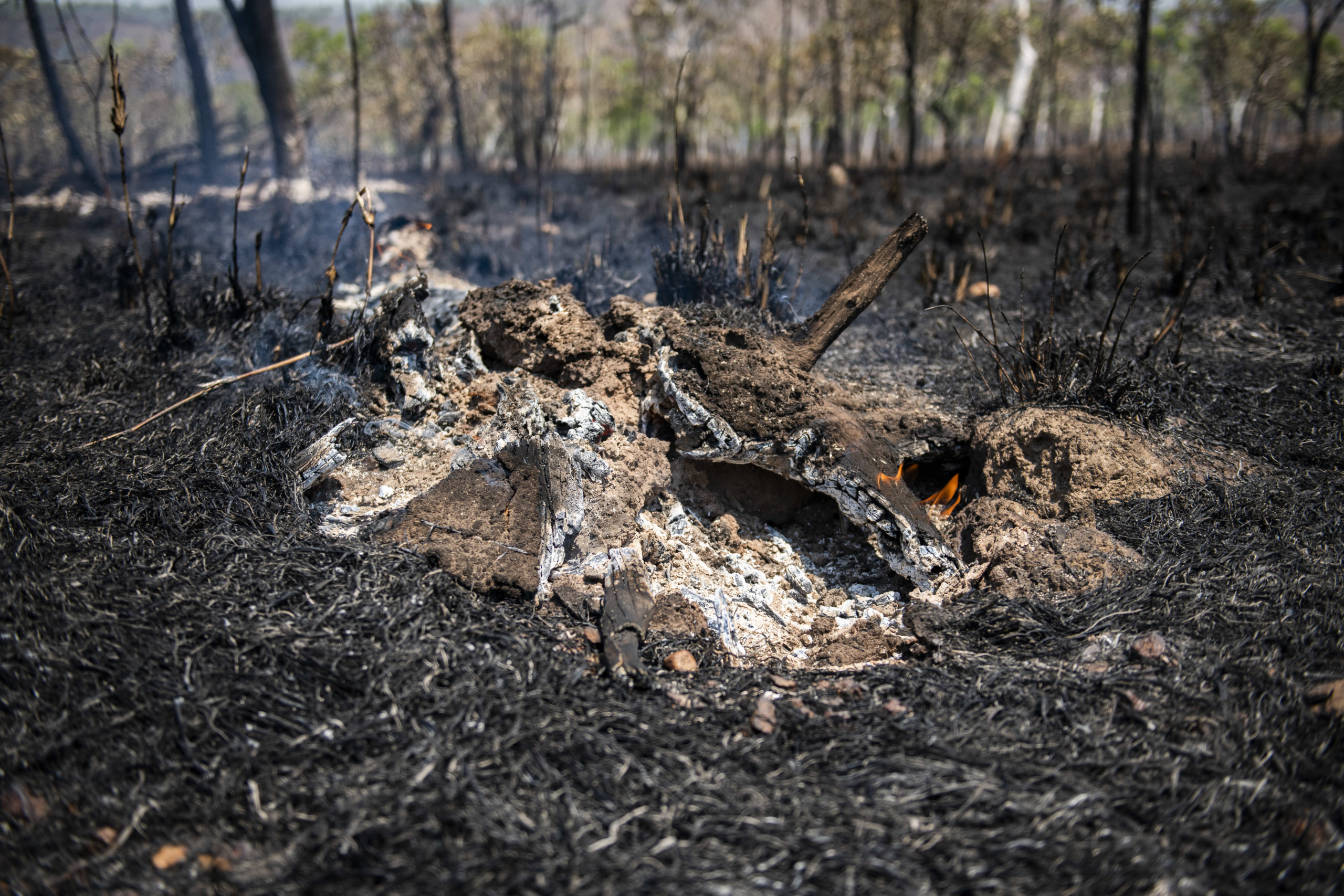13 November 2021
Savanna burning has a long history in Australia, with Aboriginal use and management stretching back for millennia. Across northern Australia, it is a landscape-scale activity that affects vegetation and biodiversity. Many factors affect the frequency and timing of burning, including land tenure (e.g. protected areas, pastoral, Indigenous land) and related management objectives (e.g. biodiversity, emissions trading, grazing, weed management, fire prevention).

Warrdeken Rangers conduct proscribed burning near the Kabulwarnamyo outstation. Photo: Glenn Campbell.
The impact of different fire regimes on biodiversity is of global interest and is a common aim of many savanna fire-management programs. This project, led by Dr Justin Perry from CSIRO, aimed to review the current burning regimes in northern Australia and the existing understanding of their relationship to biodiversity conservation. A secondary aim of the project was to identify pathways and opportunities for monitoring activities and future research to help inform how different fire regimes can benefit biodiversity.

Savanna burn where a fallen tree is on fire. Photo: NESP Northern Australia Hub.
This Northern Australia Hub project identified significant knowledge gaps around fire and biodiversity in the diverse range of habitat and climatic types across northern Australian savanna landscapes (outside of the Darwin region, which is relatively well studied).
Previous research has not provided clear links between fire regimes and biodiversity patterns, nor assessed the mechanisms that are responsible for biodiversity declines. Increasing understanding of savanna-burning effects on biodiversity will require longitudinal studies with consistent experimental designs over numerous years, particularly when time scales have to account for the recovery time of vertebrate animal species. Addressing these critical knowledge gaps will depend on a coordinated and strategic approach across the fire-management and research communities.
The most instrumental driver of change to savanna-burning regimes has been the implementation of carbon-farming methodologies. Carbon-farming methodologies in northern savannas promote the change of fire regimes from predominantly late dry-season, intense fires to lower-intensity, lower-emissions, early dry-season fires. This is achieved through the promotion of early dry-season burning which decreases fuel loads before they can build to destructive levels. Although carbon farming methodologies are a dominant driver of fire management, there are many different reasons why fire is used, and these change across and within tenure types. This project also summarised fire historical fire regimes in major land-use types across the region to explore broad trends in fire management between sectors.
You can discover more findings on the project page or read the final report.
Want to know more about the Resilient Landscapes Hub's activities and our research into practical solutions to environmental problems? Stay informed about activities, research, publications, events and more through the Hub newsletter.